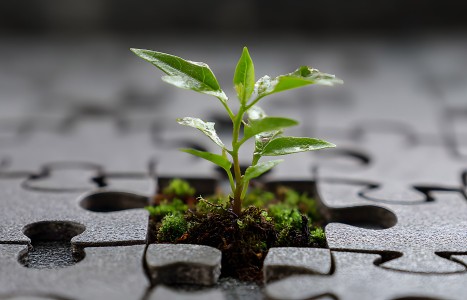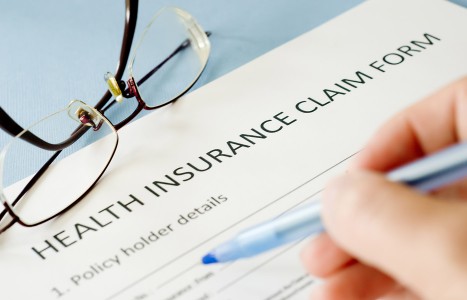When we talk about fertility, the focus is often placed on the ovaries and the uterus. Yet sperm-related factors contribute to nearly half of all cases of infertility. Whether someone is navigating fertility care alone or with a partner, and whether building a family through intercourse, IVI, IUI or IVF, it’s vital to include sperm health in the picture.
Chinese Medicine: The Natural Way to Children's Wellness
As a child, I did not like going to the doctor. For the most part, when I had to go I wasn't feeling good to begin with, and I was heading into a sterile environment to be awkwardly probed by a man in a white coat for a very short, impersonal period of time. And even worse, there was blood. Big needles that punctured fingers and arms, and big bumps left on my arm from a vaccine.
What I did enjoy, however, were trips to the family chiropractor. He was a jolly man with a gentle touch who spent quality time with us. His office felt homier than the sterile doctor's office, and there was no invasive procurement of my bodily fluids. Occasionally, he'd sit my mother down and put in a few, tiny, hairlike filaments at various places in her body. She said it helped her immensely. I was mystified as to how that could be helping my mother. I have received the benefits of gentle chiropractic techniques since I was six years old, but what those tiny filaments did for my mother still fascinated me. It was much later, during my time at Loyola University in Chicago, that I first tried acupuncture for recovery from a skiing injury.
The treatment room was comforting and the interaction with the acupuncturist extensive and sincere. I felt an incredible relaxation after the mild pinch of the filament insertion. After a few minutes of sitting with the filaments I became aware of my shoulder, and I watched with mystification as it put itself back into proper alignment. The next day my pain was significantly reduced, and within three days there was no indication that I had injured myself. My amazement grew even more when I received great benefit from a few treatments for headaches. Thus was born my great interest in Traditional Chinese Medicine (TCM).
In graduate school I had the fortune of studying under some great teachers and acupuncturists. When a new perspective and paradigm of bodily functions was presented, my passion for this form of healing grew. In TCM, the body is viewed as the ultimate healing mechanism, and disease or malfunction occurs when the healing process encounters interference. The acupuncturist and Chinese herbalist figure out the source of interference through an extensive examination process, and work with the body to clear the way, allowing the body to regulate and heal itself. Conventional pharmaceuticals can be effective when the physiological situation calls for their exact function. While effective at treating symptoms, in many cases they are overpowering to the system; hence side-effects are common. Acupuncture and herbalism, on the other hand, come with minimal side-effects as they work to restore the internal checks and balances that are already in place to keep the body and mind healthy.
In an age when 1 in 3 children suffer from either asthma, allergies, ADHD, or autism spectrum disorders, 8 and 1 in 4 children use prescription medications on a regular basis, 5 it is important that we as a society start to value and use natural, effective remedies to address our children's health issues.
As pediatric specialist Robin Green, L.Ac., states; "Pediatric acupuncture is on the verge of revolutionizing health care for our kids...In the hands of a fully trained and licensed acupuncturist, it is one of the SAFEST ways to help your child heal."8 As an East Asian Medical Practitioner (EAMP) and licensed acupuncturist, I have often had people tell me they are not in significant pain, or that they haven't suffered from anything that would call for acupuncture. While TCM, and acupuncture specifically, is becoming well known for treating pain, there is a misunderstanding as to its scope of application. The stresses that we undergo daily can be very erosive to our health, and if we don't work to counteract that erosion, then disease and disorder build up to a critical point and we experience serious medical problems. We are constantly bombarded with many types of stimulus that our body is not used to, evolutionarily speaking. The idea of sitting in a car and then sitting at a desk all day is fairly new, and one of the largest contributors to low back and sciatica-type pain. The connection between typing on a keyboard and carpal tunnel is well documented. When it comes to our children, the stresses of the new world are no less prevalent.
Processed foods challenge their digestive systems and are so prevalent that natural and raw foods can seem foreign. This has led to a rise in acquired food allergies in our children. The television and Internet bombard our children with images and content that can cause serious disruptions to their psychological functioning. The plague of the smart phone and computer gaming has many children glued to a screen and missing out on the outdoor play that was so common to the youth of previous generations. At school they also deal with many stresses that are historically new. Carrying heavy loads of large textbooks, hours of studying, pressures to perform highly in academics, athletics, and socially, often leaves adults in shock at how much their children have to cope with. With all the stressors that abound in the world today, there is never a time or place where TCM and acupuncture are not beneficial. Its ability to interrupt the erosive cycles of stress and help the body repair itself is critical in today's world. Acupuncture can counter stress and help your child patients growth and development to proceed smoothly and naturally.
Resources:
- Gold, Jeffrey I., Colette D. Nicolaou, Katharine A. Belmont, Aaron R. Katz, Daniel M. Benaron, and Wendy Yu. "Pediatric Acupuncture: A Review of Clinical Research." National Center for Biotechnology Information. U.S. National Library of Medicine, 10 Jan. 2008. Web. 27 Mar. 2014. www.ncbi.nlm.nih.gov/pmc/articles/PMC2781770/.
- Sklar, L.Ac., Marc. "Pediatric AcupunctureCommon Childhood Ailments that Respond to Acupuncture." Pacific College of Oriental Medicine. N.p., n.d. Web. 27 Mar. 2014. https://www.pacificcollege.edu/acupuncturemassagenews/articles/609pediatricacupuncturecommonchildhoodailmentsthatrespondtoacupuncture.html.
- Crute, Sheree. "Most Popular Alternative Therapies." AARP. AARP The Magazine, Mar. 2008. Web. 27 Mar. 2014. www.aarp.org/healthalternativemedicine/info022008/best_medicine_talking_the_talk.html.
- Ross, Carolyn C., M.D., M.P.H. "Pediatric Acupuncture." Pediatric Acupuncture. Real Healing, 19 July 2011. Web. 27 Mar. 2014. www.psychologytoday.com/blog/realhealing/201107/pediatricacupuncture.
- Mathews, Anna W. "So Young and So Many Pills." The Wall Street Journal. Dow Jones & Company, 28 Dec. 2010. Web. 27 Mar. 2014. http://online.wsj.com/news/articles/SB10001424052970203731004576046073896475588.
- Mayo Clinic Staff. "Acupuncture." What You Can Expect. Mayo Clinic, 25 Jan. 2012. Web. 27 Mar. 2014. www.mayoclinic.org/testsproceduresacupuncture/basics/whatyoucanexpect/prc20020778.
- CYWH Staff. "Acupuncture." Acupuncture. Boston Children's Hospital, 12 June 2013. Web. 27 Mar. 2014. www.youngwomenshealth.org/acupuncture.html.
- Green, Robin . N.p., n. d. 3 Apr 2014. www.kidsloveacupuncture.com/.


